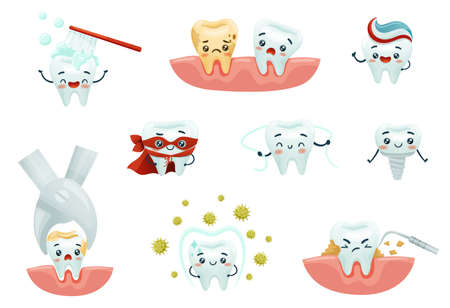Introduction to Dental Tourism for Veneers
Dental tourism has become a buzzword among Americans looking for affordable ways to improve their smiles, and veneers are often at the top of the list. Veneers—those thin, custom-made shells bonded to the front of teeth—are a popular cosmetic fix for issues like discoloration, chips, or gaps. The high price tag for veneers in the U.S., however, has many people considering treatment options overseas. With dental tourism, patients travel abroad specifically to receive dental care, drawn in by lower costs, shorter wait times, and sometimes access to cutting-edge techniques. For many Americans, the decision to go abroad for veneers is driven by the chance to save thousands of dollars without sacrificing quality. But as appealing as those savings sound, there’s more to consider than just price. Understanding why so many people are packing their bags for dental work is key to deciding if this path is truly cost-effective—or worth the potential risks.
Comparing Costs: U.S. vs. Popular Dental Tourism Destinations
If youre considering getting veneers, the price tag in the U.S. might make you think twice—especially when you hear about people heading overseas to save money. But is it really more affordable once you factor in all the expenses? Here’s a breakdown of what you can expect to pay for veneers both at home and abroad, including hidden costs like travel and accommodation.
Average Veneer Prices in the U.S.
Getting veneers stateside is known for being expensive, especially if you’re aiming for high-quality materials and top-tier cosmetic dentists. Typically, insurance doesn’t cover veneers since they’re considered elective. Here’s what you can expect:
| Location | Price per Veneer | Total for 8 Veneers |
|---|---|---|
| United States (average) | $1,000–$2,500 | $8,000–$20,000 |
This doesn’t include consultations, follow-up visits, or potential repairs down the line.
Popular Dental Tourism Destinations
Countries like Mexico, Costa Rica, Thailand, and Turkey have become hotspots for dental tourism thanks to their lower prices and English-speaking clinics that cater to Americans. Here’s how they stack up:
| Country | Price per Veneer | Total for 8 Veneers | Additional Costs* |
|---|---|---|---|
| Mexico | $250–$600 | $2,000–$4,800 | $800–$1,500 (flight + hotel) |
| Costa Rica | $350–$650 | $2,800–$5,200 | $1,000–$1,800 (flight + hotel) |
| Thailand | $300–$700 | $2,400–$5,600 | $1,200–$2,000 (flight + hotel) |
| Turkey | $200–$450 | $1,600–$3,600 | $1,200–$1,800 (flight + hotel) |
*Note:
The “Additional Costs” column covers average round-trip airfare from major U.S. cities and a week’s stay at a mid-range hotel for one person. Prices may vary by season and location within each country.
The Real Cost Comparison: Is It Worth Traveling?
Even when you add in travel and accommodation expenses, getting veneers abroad can be thousands of dollars cheaper than doing it in the U.S.—sometimes cutting your bill by half or more. However, you should factor in the value of your time off work and any follow-up trips if complications arise. All things considered, dental tourism can offer significant savings if you do your homework on reputable clinics and plan carefully.
![]()
3. Quality and Safety Concerns
When considering dental tourism for veneers, it’s essential to weigh the potential risks alongside the savings. One of the most significant concerns is the standard of care in other countries compared to what you’d expect in the U.S. While some international clinics may advertise state-of-the-art technology and highly qualified dentists, not all locations are held to the same strict regulations or oversight that American dental practices must follow. This can make it difficult to verify whether a clinic truly meets acceptable hygiene, sterilization, and procedural standards.
Credential verification is another major issue. In the U.S., you can easily check your dentist’s licenses, qualifications, and reviews through official boards and online resources. Overseas, verifying credentials might be much more complicated, especially if there are language barriers or less transparent regulatory bodies. Without this assurance, there’s a risk of being treated by someone who isn’t properly trained or certified in cosmetic dentistry procedures like veneers.
Beyond standards and credentials, patients should also consider the risks associated with post-procedure complications. Veneers require precision work and sometimes follow-up care—if something goes wrong after you return home, finding a local dentist willing to fix or adjust work done abroad can be challenging and expensive. Additionally, legal recourse for malpractice is far more limited when dealing with providers outside the United States. Ultimately, while dental tourism might seem like an attractive way to save money on veneers, compromising on quality and safety could end up costing you much more in the long run.
4. The Patient Experience: Comfort, Communication, and Aftercare
If you’re an American considering dental tourism for veneers, it’s crucial to know what the real patient experience feels like—from your first consultation to heading home with a new smile. While cost savings and access to quality materials are big draws, there are some aspects of comfort, communication, and aftercare that you simply can’t ignore.
Language Barriers and Communication Gaps
One of the first things many Americans notice when seeking dental care abroad is the language barrier. While most reputable clinics in popular destinations (like Mexico or Costa Rica) have English-speaking staff, misunderstandings can still happen. Complex procedures such as veneers require clear communication about expectations, shade matching, and follow-up instructions. If you’re not fluent in the local language, even small miscommunications can lead to big disappointments.
Common Communication Challenges
| Challenge | Potential Impact | How to Prepare |
|---|---|---|
| Technical Dental Terms | Mismatched expectations for shape/color | Bring reference photos, request detailed explanations |
| Aftercare Instructions | Poor healing or veneer issues | Ask for written instructions in English |
| Emergency Situations | Panic or delays in treatment | Know how to reach your dentist post-procedure |
The Comfort Factor: Clinic Environment & Local Culture
Even if the clinic looks modern online, being treated in a foreign country can feel intimidating. Different standards for privacy, waiting times, and pain management may catch Americans off guard. Some patients report feeling rushed or having less time with their dentist than they’d expect at home. On the flip side, many say the hospitality and friendliness of international clinics exceed U.S. experiences—so it’s a mixed bag that depends on both the clinic and country.
Aftercare: What Happens When You Fly Home?
This is where dental tourism often gets tricky. Veneers aren’t a one-and-done procedure; sometimes they require adjustments or repairs weeks or months later. If you run into issues once you’re back in the States, your U.S. dentist may be reluctant to fix work done elsewhere—or you could be faced with unexpected costs out-of-pocket.
Key Aftercare Considerations for Americans Traveling Abroad:
- Follow-Up Care: Will your overseas clinic offer virtual check-ins? Are they responsive via email or phone?
- Warranty Policies: Does your dental work come with a guarantee? What does it cover—and do you have to travel back if something goes wrong?
- Local Support: Can you find a U.S.-based provider willing to handle complications if needed?
The bottom line: While dental tourism for veneers can be cost-effective, Americans should weigh the full patient experience—not just price tags. Being prepared for communication hurdles and planning ahead for aftercare can make all the difference between a dream smile and an expensive headache.
5. Legal and Ethical Considerations
When considering dental tourism for veneers, it’s crucial to think beyond just the price tag and weigh the legal and ethical factors involved in getting dental treatment outside the United States. While many international clinics advertise attractive deals, U.S. consumers should be aware that legal protections can differ dramatically from what they’re used to at home. Unlike dentists practicing in the U.S., who are held to strict state regulations and professional licensing standards, overseas providers may not be subject to the same level of oversight or accountability.
If something goes wrong with your veneers abroad—such as complications, unsatisfactory results, or even malpractice—your options for recourse can be limited. Filing a lawsuit or seeking compensation in a foreign country is often complicated, costly, and time-consuming, especially if you don’t speak the local language or understand their legal system. Even getting access to your dental records or arranging follow-up care might be challenging once you return to the U.S.
From an ethical perspective, dental tourism raises some important questions about patient safety and informed consent. Are you being given all the necessary information about materials used, potential risks, and alternative treatments? In some countries, regulations around patient rights and transparency aren’t as stringent, making it harder for travelers to make truly informed decisions. There’s also the issue of continuity of care—aftercare is vital for any cosmetic dental work like veneers, but most U.S.-based dentists may hesitate to fix problems caused by procedures performed overseas.
Ultimately, while heading abroad for cheaper veneers might seem appealing financially, consumers need to consider whether saving money is worth the increased risks and lack of legal protection. If you’re thinking about dental tourism, do your research: check local laws where you plan to travel, ask about dispute resolution processes, and ensure you’re comfortable with both the provider’s credentials and their ability to communicate clearly about your treatment. Remember: when it comes to your health and smile, cutting corners on legal and ethical standards could cost you more in the long run.
6. Is It Worth It? Weighing the Pros and Cons
When it comes to dental tourism for veneers, the decision really boils down to your priorities, risk tolerance, and expectations. On the pro side, there’s no denying the appeal of saving thousands of dollars on what’s often considered a cosmetic luxury in the U.S. Many clinics abroad offer impressive facilities and experienced dentists—sometimes even more personalized service than you’d expect at home. Plus, you get to travel and experience a new culture, which can make the process feel less like a medical procedure and more like an adventure.
However, from a consumer point of view, the risks are real. The biggest concern is always quality: while some international dentists are top-notch, others may cut corners or use lower-quality materials. There’s also the worry about what happens if something goes wrong—warranties and follow-up care can be tricky when your dentist is thousands of miles away. Communication barriers, differences in medical standards, and navigating unfamiliar legal systems add more layers of complexity.
If you’re someone who values savings above all else and feels comfortable doing your homework—researching clinics, reading reviews from real patients, verifying credentials—you might find dental tourism a rewarding option. But if you’re risk-averse or want the security of easy follow-up care at home, you might decide that sticking with a local dentist is worth the extra cost for peace of mind.
Ultimately, dental tourism for veneers isn’t a one-size-fits-all solution. For some Americans, it’s a smart move; for others, it may lead to unexpected headaches and hidden costs. The key is to weigh your personal comfort level with travel, research thoroughly, set realistic expectations—and never sacrifice quality just to save money on your smile.


